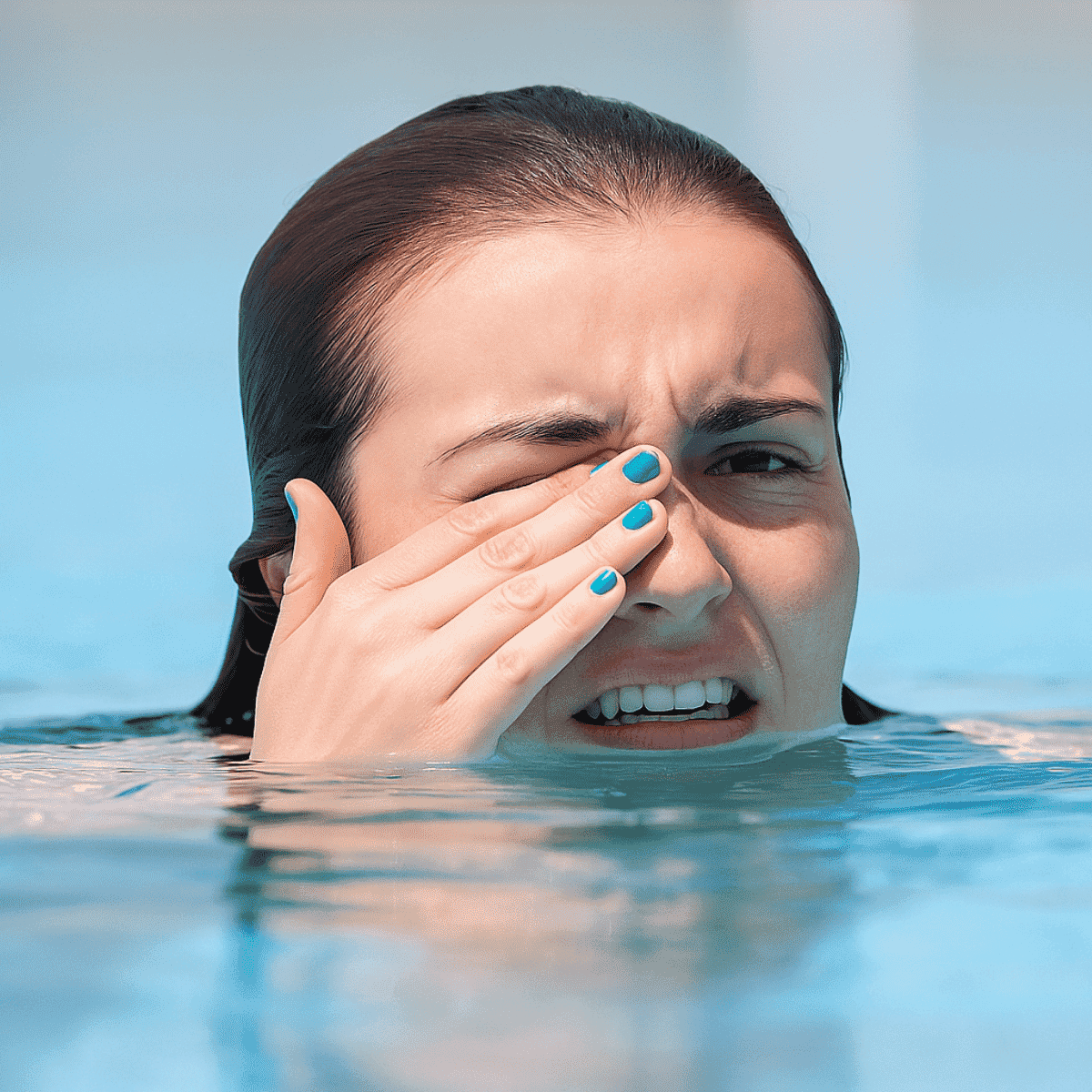
Less than a minute Read
Why Smelling Chlorine Should Make You Rethink That Swim

Category

Chlorine vs Chloramines
These compounds, formed when chlorine reacts with contaminants in the water, not only irritate the skin and eyes but also pose a significant respiratory health hazard and are the actual cause of that tell tale “chlorine” smell. In this article, we delve into the dangers of chloramines and explore ways to mitigate their impact on pool-goers.
Understanding Chloramines
When chlorine, the most common pool disinfectant, interacts with organic substances like sweat, urine, and body oils introduced by swimmers, it forms chloramines. Among these, dichloramine and trichloramine are the most prevalent. While chlorine effectively kills bacteria and other pathogens, chloramines linger in the water and air, creating a host of health issues.
Respiratory Risks
Skin and Eye Irritation:
Mitigating Chloramine Exposure:
Fortunately, there are measures that pool owners and operators can take to reduce chloramine levels and enhance air and water quality.
Regular monitoring of chlorine and pH levels is crucial to maintaining proper disinfection and preventing chloramine buildup. Adequate ventilation systems help disperse chloramine-laden air and introduce fresh air into indoor pool facilities.
We at Recotherm manufacture air handling systems specifically designed for indoor pools. Featuring intelligent controls for optimal energy efficiency and uniquely can run on full fresh air to combat any particularly chloramine heavy pool halls. Implementing ultraviolet (UV) or ozone-based secondary disinfection systems can also supplement chlorine treatment, effectively breaking down chloramines and improving overall water quality.


Educating Pool Users
While pool management plays a vital role in mitigating chloramine exposure, swimmers themselves can contribute to a healthier pool environment. Encouraging proper hygiene practices, such as showering before swimming and refraining from urinating in the pool, helps minimize the introduction of organic contaminants. Moreover, educating pool-goers about the dangers of chloramines and the importance of ventilation and water quality maintenance fosters a safer and more enjoyable swimming experience for all.
Chloramines may be invisible to the naked eye, but their impact on respiratory health and overall well-being is undeniable. By understanding the risks associated with chloramine exposure and implementing effective mitigation strategies, we can ensure that swimming pools remain places of joy and relaxation without compromising on safety. From diligent water quality management to promoting responsible swimming practices, let’s work together to keep chloramines at bay and make every dip in the pool a refreshing and rejuvenating experience.






